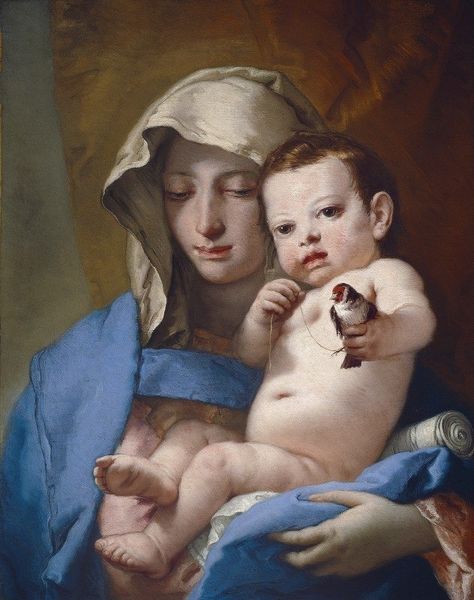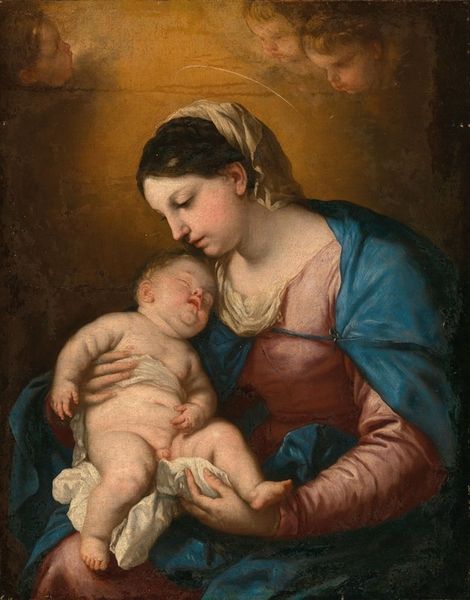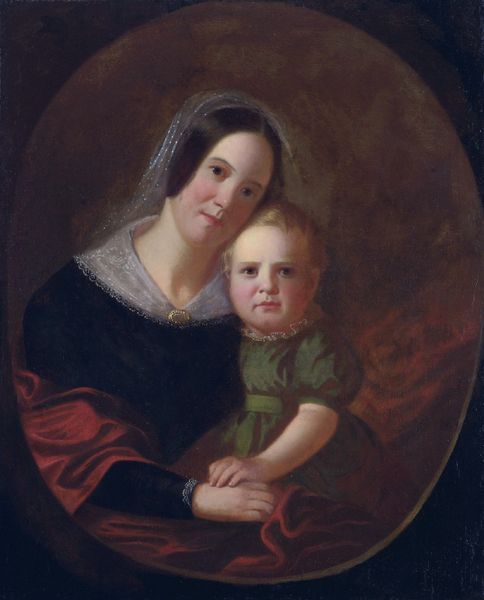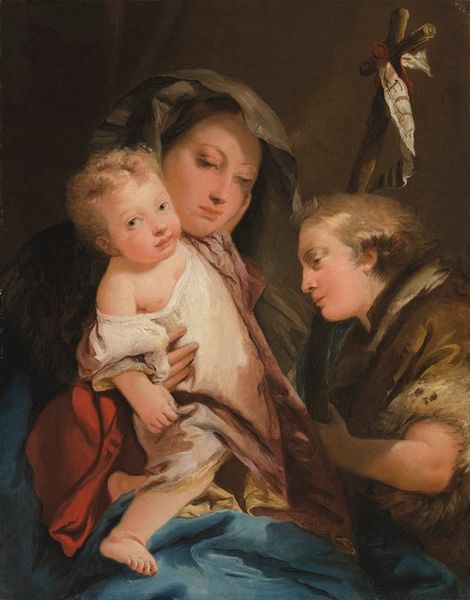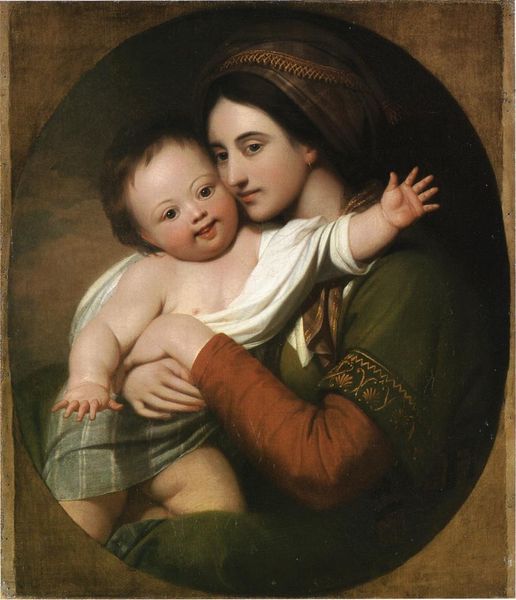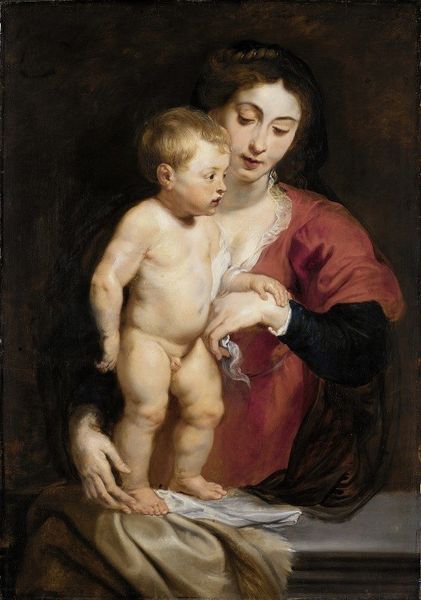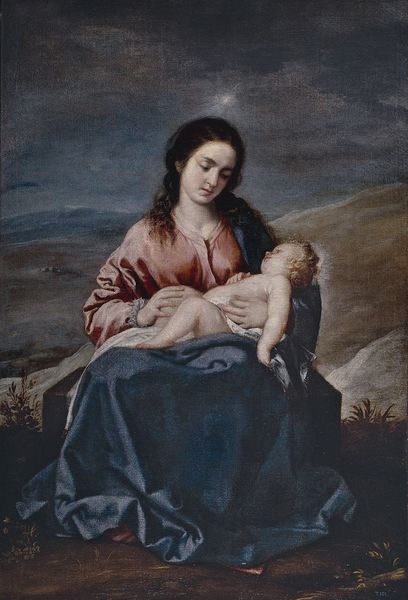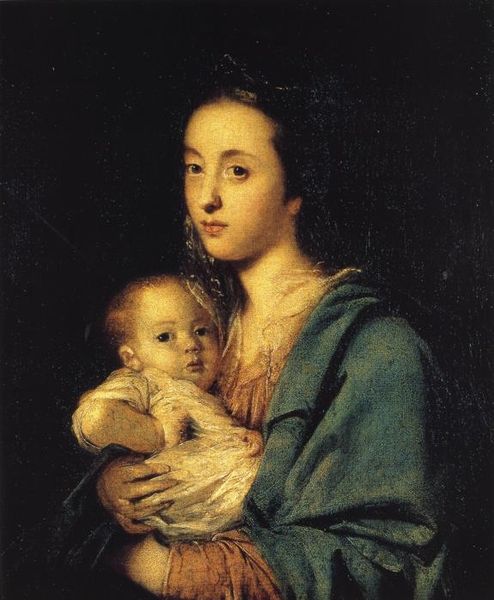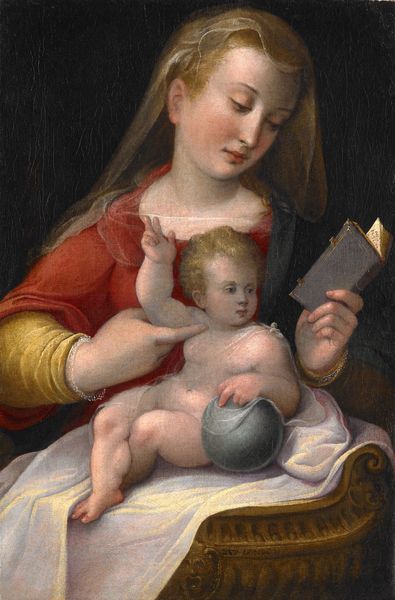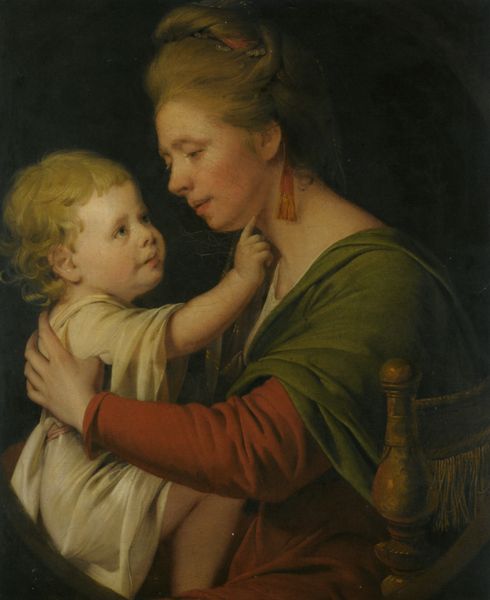
painting, oil-paint
#
portrait
#
baroque
#
painting
#
oil-paint
#
figuration
#
history-painting
Copyright: Public Domain: Artvee
Curator: Here we have Giovanni Battista Tiepolo's "Madonna and Child," an oil painting likely created between 1730 and 1745. The oval composition frames a tender scene. Editor: My initial reaction is one of gentle melancholy. There's a softness in the light and shadow that creates a feeling of introspection. It seems smaller and more intimate than some of the more grandiose baroque treatments of this subject I've encountered. Curator: It's fascinating how Tiepolo situates this Madonna and Child within the artistic and social contexts of the 18th century. We can see reflections of prevailing views on motherhood and familial love of that era but also subtle critiques. Editor: The downcast gaze of the Madonna is such a powerful symbol. She embodies not just maternal love, but a kind of premonition, perhaps alluding to future suffering, which makes me wonder about its place within religious iconography of the period. Is Tiepolo echoing familiar symbols or pushing against them? Curator: I think Tiepolo utilizes visual strategies of both affirmation and resistance. We can note how motherhood and the cult of domesticity rose into social discourse during the baroque, especially given gender inequality and the place of women in the home. Tiepolo seems to negotiate both spiritual devotion and the everyday reality of a woman. Editor: The palette is also worth noting. Those muted blues and reds, contrasted with the creamy skin tones, reinforce this mood of subdued emotion, yet hinting towards future sacrifices. Considering the context of 18th-century sensibilities, how does that relate to notions of feminine virtue and duty? Curator: This prompts critical inquiries on social responsibility versus imposed morality. Tiepolo makes visible those complicated positions assigned to women by powerful institutions in their cultural moment. He renders the figure neither saintly nor docile but a blend of quiet introspection and acceptance. Editor: Looking closely at the gestures—the way the Madonna cradles the child—it feels more humanized. It’s more accessible than a grand, untouchable representation of divinity. Reflecting, perhaps, an internal and domestic divinity, not a larger scale or unreachable one. Curator: A moving example, demonstrating art's capacity to echo and question social paradigms. Editor: A subtle yet profound study in faith, love, and the weight of the world.
Comments
No comments
Be the first to comment and join the conversation on the ultimate creative platform.
